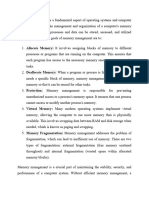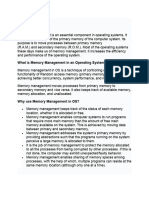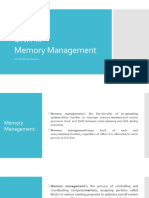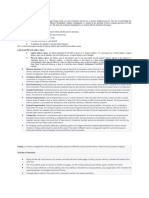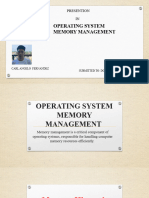0% found this document useful (0 votes)
8 views2 pagesOS Notes
Modern operating systems utilize various memory management techniques including contiguous memory allocation, paging, segmentation, virtual memory, and swapping to optimize memory usage and maintain system stability. Contiguous allocation is simple but can lead to fragmentation, while paging and segmentation improve efficiency and organization. Virtual memory allows processes to run without being fully in memory, and swapping enables multitasking by moving processes between memory and storage.
Uploaded by
KashishCopyright
© © All Rights Reserved
We take content rights seriously. If you suspect this is your content, claim it here.
Available Formats
Download as PDF, TXT or read online on Scribd
0% found this document useful (0 votes)
8 views2 pagesOS Notes
Modern operating systems utilize various memory management techniques including contiguous memory allocation, paging, segmentation, virtual memory, and swapping to optimize memory usage and maintain system stability. Contiguous allocation is simple but can lead to fragmentation, while paging and segmentation improve efficiency and organization. Virtual memory allows processes to run without being fully in memory, and swapping enables multitasking by moving processes between memory and storage.
Uploaded by
KashishCopyright
© © All Rights Reserved
We take content rights seriously. If you suspect this is your content, claim it here.
Available Formats
Download as PDF, TXT or read online on Scribd
/ 2




